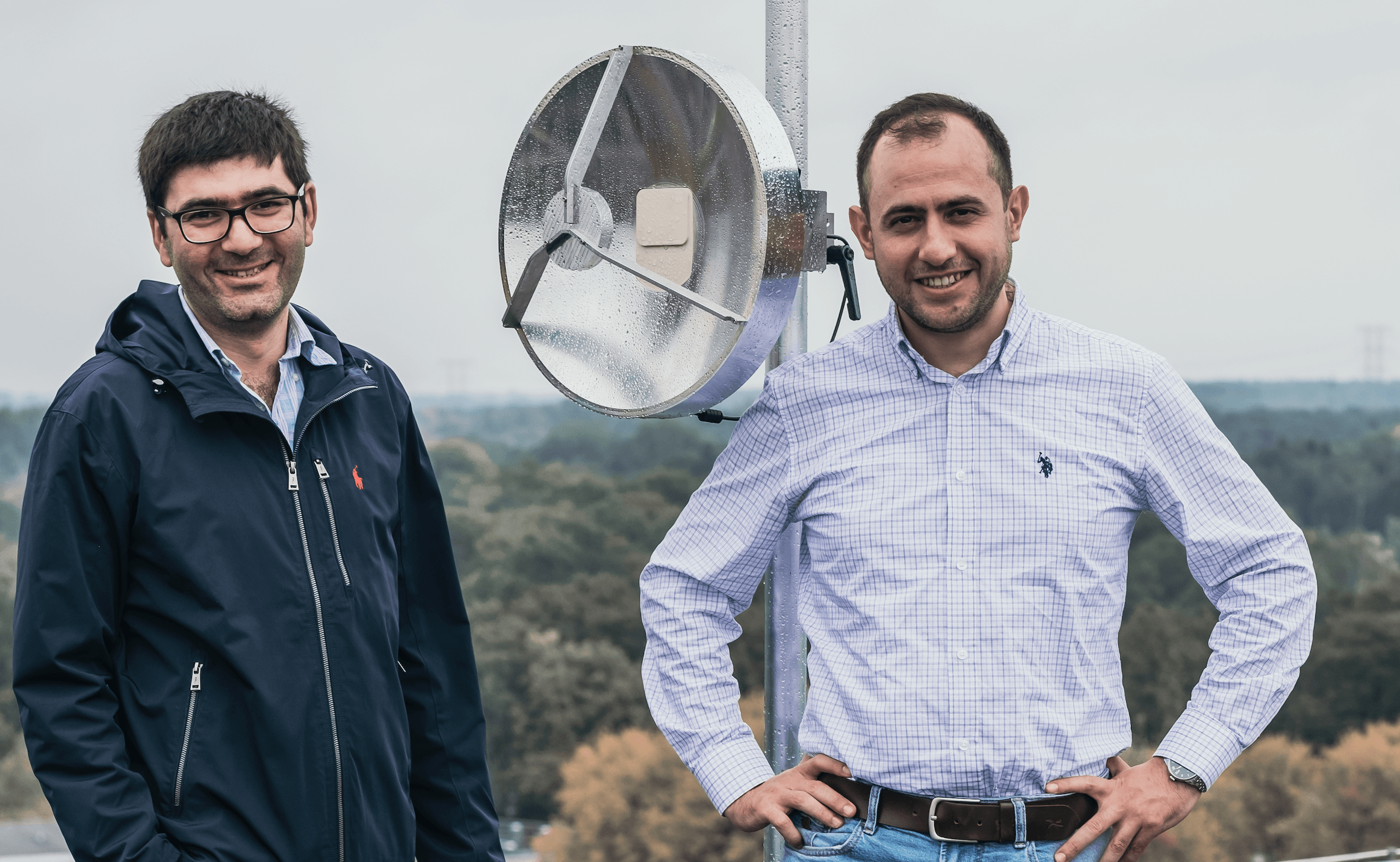
Whole series of devices connected simultaneously and without loss of function; downloading complete films in seconds; autonomous cars: the extremely fast 5G network should make all this possible. The problem is that the fastest form of 5G requires very fast wireless connections that now only work over short distances. This is why a new antenna technology has been developed at the Eindhoven University of Technology that allows this fast form of 5G – and its successor 6G – to communicate over long distances. Recently, the first practical test was successfully carried out from the roof of two buildings on the Eindhoven campus.
The next generation of wireless networks, 5G, is expected to be rolled out commercially by 2020. This is the first phase, with relatively low frequencies, only slightly faster than 4G. But: the higher the frequency, the more data you can send. That is why the world is also working towards a form of 5G that works at much higher frequencies – 26 GHz to be precise. Then the capacity increases by a factor of one hundred, which is necessary for autonomous cars, for example.
The enormous increase in data speed in 5G requires that the wireless connections between base stations also have enormous capacity. That is why even higher frequencies of 80 GHz will be used for this purpose. “The problem with sending signals at these high frequencies is that they are only strong enough at very short distances,” says Bart Smolders, professor of telecommunications at the Eindhoven University of Technology.
Electronically coupled antennas
This is why for years already, work has been going on at the university on antennas that enable signals at these high frequencies to be transmitted over longer distances. The technology uses a series of electronically coupled antennas, which electronically direct the radio beams in the right direction, combined with a satellite dish that focuses the energy and increases the distance. This technology has been further developed within TU Eindhoven-spin-off MaxWaves into a demonstrator, the first step towards a prototype.
“The antennas bundle multiple radio waves into a very narrow, strong radio signal, comparable to a laser beam”, says Ronis Maximidis, PhD candidate and co-founder of MaxWaves. According to Maximidis, this enables a 100 times greater signal strength, which means that a five times greater distance can be achieved than with the current techniques.
The high-frequency signals require that the transmitting and receiving antennas are directed exactly towards each other, in all weather conditions. Maximidis: “Our system electronically aligns the antenna beams, so that the dishes containing the antennas do not have to move mechanically.”
Live demo
The system was recently tested in practice for the first time. From the roof of two buildings on the campus of the Eindhoven University of Technology, a connection has been successfully established with the antennas, about 700 metres in length. “With this test, we have shown that our concept works outside the lab. The next step is now to build a prototype. Our goal is to provide the whole world with 5G and 6G, even in the most remote areas”, says Maximidis.

